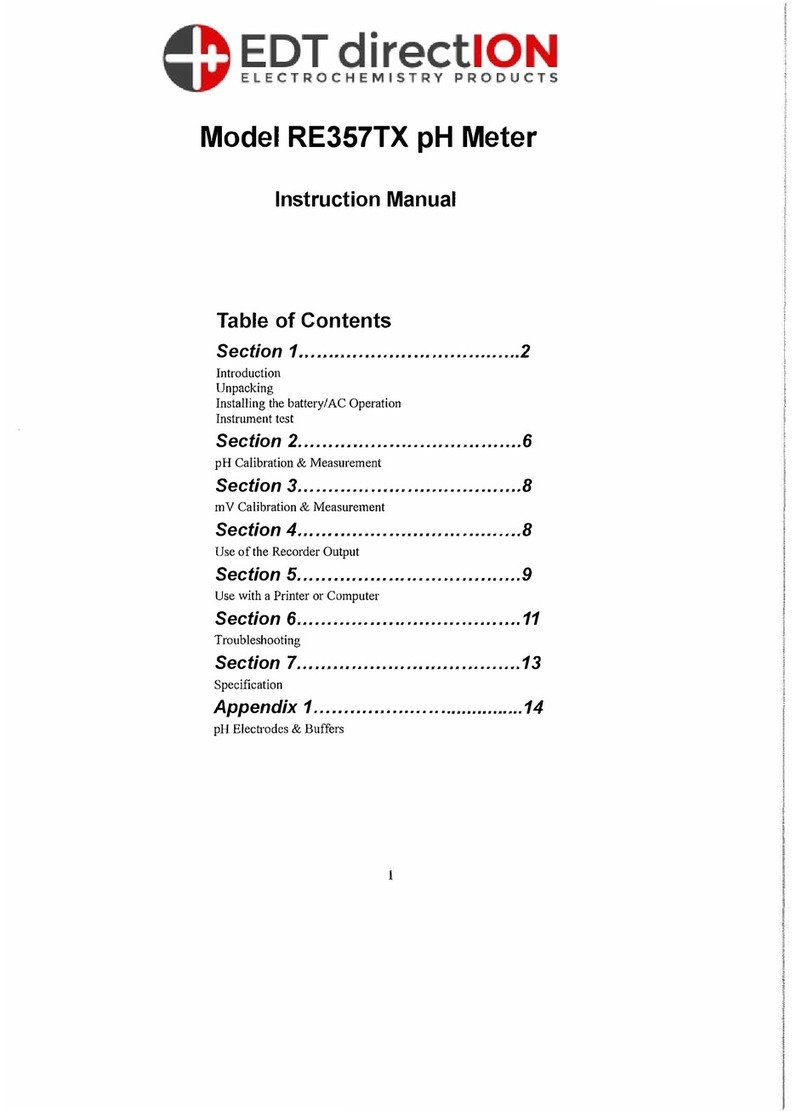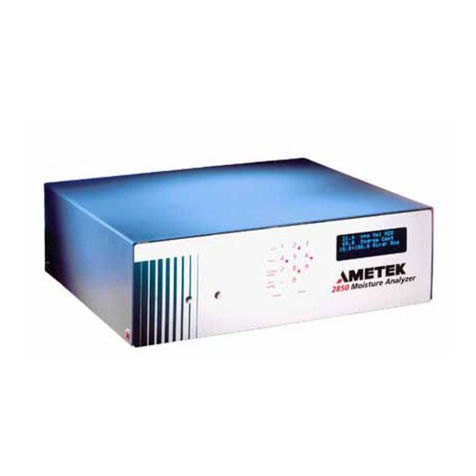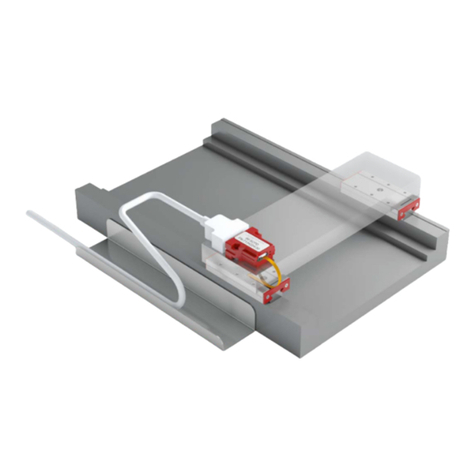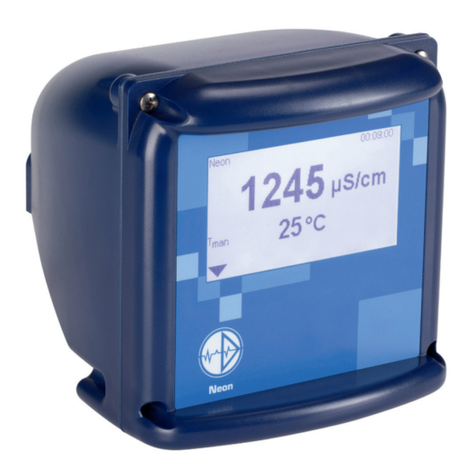ECM afm1000 User manual

AFM1000
Air-Fuel Ratio Combustion Monitor
Instruction Manual
7/02 Part Number 1000A-6
™

COPYRIGHT 1998-2002 by ECM: ENGINE CONTROL AND MONITORING.
All Rights Reserved.
No part of this manual may be photocopied or reproduced in any form without prior written
consent from ECM: ENGINE CONTROL AND MONITORING.
Information and specifications subject to change without notice.
AFM1000 is a trademark of ECM: ENGINE CONTROL AND MONITORING.
Printed in the United States of America.

Table of Contents
Introduction 1
The Air-Fuel Ratio Combustion Monitor (AFM1000) 1
AFM1000 Components List 1
Important Operation Notes 2
How to Use 3
Hooking-up the AFM1000 3
Power 4
Warm-up 4
Analog Output 4
Calibration 4
Fuel Type Compensation 5
Pressure Compensation 5
Specifications and Limits 7
Measurement Range and Accuracy 7
Exhaust Operating Limits 7
Sensor Installation 7
Output Specifications and Limits 7
General Information 7
Troubleshooting 8
Safety Warnings 9
Warranty and Disclaimers 10
i

ii

Introduction
The Air-Fuel Ratio Combustion Monitor (AFM1000)
The ECM Air-Fuel Ratio Combustion Monitor (AFM1000) was designed for the
professional calibration of carburetor or fuel-injection systems. Using a state-of-the-art,
wide-range UEGO (Universal Exhaust Gas Oxygen) sensor, the AFM1000 provides
unmatched measurement range, accuracy, and speed-of-response in a compact, lightweight
package. Suitable for dynamometer or in-vehicle applications, the AFM1000 is an essential
tool for any engine development program.
AFM1000 features:
•Measurement range of 8 to 18 AFR (gasoline1)
•Easy calibration in air
•0 to 5 volt linearized output for use with data acquisition or engine control
systems
•11 to 28 VDC operation2
AFM1000 Components List
The following items are included with the AFM1000:
Item No. Description Part Number
1. Control Module 1000A-1
2. UEGO Sensor 1000A-2
3. Wiring Harness, 20’ or 1000A-3a
Wiring Harness, 10’ or 1000A-3b
Wiring Harness, 3’ 1000A-3c
4. Calibration Screwdriver 1000A-4
5. Sensor Mounting Boss and Plug (M18X1.5mm) 1000A-5
6. Instruction Manual 1000A-6
1Assumes fuel H:C ratio of 1.85. For other fuels see the “Fuel Type Compensation” section.
2An AC/DC Power Supply (P/N 1000A-7) is available.
1

Important Operation Notes
1. Before installing the UEGO sensor, apply a small amount of non-lead containing
antiseize compound to its threads. Do not get the compound on the sensor's tip.
2. Do not operate an engine for more than three minutes with the UEGO sensor in the
exhaust and the control module’s power off. If the sensor is off in a running engine
for a longer period, soot and water will condense in the sensor and may reduce its
sensitivity.
3. Do not use the UEGO sensor in exhaust systems in which water is sprayed into the
exhaust. Water striking the sensor may cause permanent sensor damage.
4. Do not put the UEGO sensor in a heavily sooting or oil-burning engine.
5. Use of the UEGO sensor with leaded fuels may reduce the sensitivity of the sensor.
6. Do not put the UEGO sensor in exhausts in which the temperature is greater than
950 deg. C (1742 deg. F) or the pressure is not between 0.8 to 1.3 atm.
7. Route and cable-tie the wiring harness away from hot or moving objects and ignition
wires.
8. Do not remove or attach the UEGO sensor from the instrument harness with the control
module on.
9. Do not drop the UEGO sensor onto a hard surface.
10. Do not expose the UEGO sensor to flammable substances.
11. Do not attempt to wash the UEGO sensor with any solvent or compressed air.
2

How to Use
Hooking-up the AFM1000
Location of the UEGO Sensor
The UEGO sensor should be located approximately 12" from the exhaust valve(s) of the
engine. A location further from the engine may be used as long as it is at least ten times the
exhaust pipe diameter upstream of the end of the exhaust system. For example, with a 2 1/2"
diameter exhaust pipe, the sensor should be at least 25" upstream of the end of the exhaust.
The problem with locations further downstream than ten diameters is that air may be trapped
in the exhaust giving leaner than actual readings. This especially occurs at low exhaust
flowrates. UEGO sensor mounting locations far from the engine expose the sensor to more
liquid water during start-up and should be avoided.
When choosing a UEGO sensor location, take into consideration engine movement, ground
clearance, and wire harness routing.
Install the UEGO sensor by lightly coating its threads with a non-lead containing antiseize
compound and tighten it to 30 ±3 ft-lbf (40 ±4 Nm). Attach the sensor to the wiring harness
and route the harness to the control module. Use cable ties to keep the harness away from
hot or moving objects and ignition wires.
Do not modify the wiring harness and replace it if it is damaged.
Installation of the Sensor Mounting Boss
The UEGO sensor is mounted in the engine's exhaust by threading it into a M18X1.5mm
boss that is cast, welded, or brazed onto the engine's exhaust pipe. This thread size is
identical to that of most exhaust oxygen sensors (O2sensors) used in production automobiles
with 3-way exhaust catalysts.
The sensor boss provided has a M18X1.5mm thread. To mount the boss, first drill a 3/4"
diameter hole in the desired location. Wire-brush the area around the hole and clamp the
boss over the hole. Do not mount the sensor where liquid inside the exhaust may collect in
the sensor or its threads. Weld or braze the boss to the exhaust pipe. After the boss is
attached to the exhaust, tap the treads to clean them and file the top of the boss to provide a
flat surface for sealing. When the UEGO sensor is not being used, use the supplied plug
(with some anti-seize) to plug the hole. Do not use the UEGO sensor to plug the hole when
the control module is not being used.
3

Power
The AFM1000 requires clean DC power of 11 to 28V at 1.4A (steady-state). During sensor
warm-up, the requirements are approximately 5A for a period of up to 1 minute. A good car
or motorcycle 12V battery can meet these specifications. An AC/DC power supply is
available (P/N 1000A-7). The supplied wiring harness must be connected directly to the
power source. Do not modify the wiring harness.
Warm-up
After powering-up the AFM1000, it will take less than one minute for the control module to
bring the UEGO sensor to its operating temperature. It is okay to have the engine running
during this period. It fact it is recommended that a cold engine be started before the
AFM1000 is powered-up. The reason for this is to allow any condensed water to be cleared
from the exhaust system. Water can thermally shock the UEGO sensor.
Analog Output
The AFM1000 has a 0V to 5V linearized output suitable for input into a data acquisition or
engine control system.
The relationship between the analog output (Vout) and the AFR for gasoline1is:
AFR = 2.0 x Vout + 8.0 (for gasoline only)
For example, if Vout is 1 V then the AFR is 10:1.
The analog output is available from the female BNC connector on the wiring harness. The
shell of the connector is signal ground and it is electrically connected to the power source
ground.
When the AFM1000 is first turned on, the output passes through a sequence of three voltages
(0.0V (8.0 AFR), 3.28V (14.56 AFR), 5.00V (18.0 AFR)). Each voltage is held for five
seconds. The purpose of this sequence is to verify correct electrical connection and signal
conversion with the AFM1000 and the data receiving device.
Calibration
Calibration of the AFM1000 and the UEGO sensor requires that the sensor be held in air (not
in the exhaust even with the engine off) for 3 minutes following power-up. To bring the unit
into calibration, adjust the calibration potentiometer (CAL POT) on the top of the control
module using the calibration screwdriver provided. The screwdriver must be inserted
approximately ½" inside the unit to reach the potentiometer. First turn the potentiometer to
1Assumes fuel H:C ratio of 1.85. For other fuels see the “Fuel Type Compensation” section.
4

counter-clockwise until the CAL LED (orange) is off, then turn the potentiometer slowly
clockwise until the CAL LED just lights. If the CAL POT cannot be turned to where the
CAL LED is off then the sensor is bad.
Fuel Type Compensation
The AFM1000 assumes a fuel H:C ratio of 1.85 and an O:C ratio of zero. If a fuel of a
different composition (H:C=m, O:C=p) is used, Equation 2 can be used to compensate (i.e.
correct) the AFM1000’s output.
AFRcorr = [(2.368 x (m - 2p + 4)) / (m + 16p + 12)] x AFR [Equation 2]
where: AFRcorr is the AFR for the fuel of H:C=m and O:C=p composition.
AFR is the AFR output by the AFM1000.
The relationship between the analog output (Vout) and the AFR for methanol (race car
“alcohol”) is:
AFR = 0.888 x Vout + 3.55 (methanol only) [Equation 3]
The relationship between the analog output (Vout) and the AFR for ethanol (corn alcohol) is:
AFR = 1.235 x Vout + 4.94 (ethanol only) [Equation 4]
The relationship between the analog output (Vout) and the AFR for M85 is:
AFR = 1.050 x Vout + 4.22 (M85 only) [Equation 5]
The relationship between the analog output (Vout) and the AFR for CH4(natural gas) is:
AFR = 2.366 x Vout + 9.46 (natural gas only) [Equation 6]
Pressure Compensation
All wide-range exhaust sensors have a pressure sensitivity. Errors occur when the sensor is
operated at pressures different from the pressure at which it was calibrated. Changes in
pressure come about from changes in weather, altitude changes, and engine backpressure.
There is no sensitivity to pressure at stoichiometric (Lambda = 1) conditions. The sensitivity
gets greater the further from stoichiometric the engine is operated. Increases in pressure
make the sensor read further from stoichiometric (i.e. if lean, reads leaner, if rich, reads
richer). For example, an increase in exhaust pressure of 127 mmHg above the calibration
pressure (which would result from calibrating at 1 mile above sea level and then driving
down to sea level) would make a 12.65 AFR engine read 12.50 or a 16.77 AFR engine read
17.00. To compensate for pressure use Equation 7:
5

AFRcorrected = (AFRmeasured + B x P) / (1 + C x P) [Equation 7]
where: AFRcorrected = the AFR corrected for exhaust pressure.
AFRmeasured = the AFR output by the AFM1000.
B = 0.009140 for AFR < 14.57 (rich).
B = 0.012100 for AFR ≥14.57 (lean).
C = 0.000627 for AFR < 14.57 (rich).
C = 0.000830 for AFR ≥14.57 (lean).
P = the exhaust pressure in mmHg above the pressure at which the
sensor was calibrated (using the CAL POT on the AFM1000 while
the sensor is held in air).
6

Specifications and Limits
Measurement Range and Accuracy
•Range: 8 to 18 AFR (gasoline)1
•Accuracy: 1.5%
Exhaust Operating Limits
Maximum Exhaust Gas Temperature: 950 deg. C, 1742 deg. F.
Exhaust Gas Pressure Range: 0.8 - 1.3 atm.
Sensor Installation
Thread Size: M18X1.5mm. Lightly coat with non-lead containing antiseize.
Hex Size: 22mm.
Tightening Torque: 30 ±3 ft-lbf, 40 ±4 Nm.
The UEGO sensor's thread size is identical to that of most O2sensors used in production
vehicles.
Output Specifications and Limits
Analog Output:
•0V at 8.0:1 AFR (gasoline)
•5V at 18.0:1 AFR (gasoline)
•AFR = 2.0 x V + 8.0
•Output Impedance: 500 Ohm
•Output Connector: Female BNC, Signal = Center, Ground = Shell
General Information
Power: 11 to 28 VDC at 5A (surge), 1.4A (continuous)
Fuse: Internal, automatically resetable
Dimensions: 4" x 3.5" x 1",
102mm x 89mm x 25mm (W x H x D)
Weight: 5.6 oz., 160 gm.
1Assumes fuel H:C ratio of 1.85. For other fuels see the “Fuel Type Compensation” section.
7

Troubleshooting
If the Green LED on the side of the unit is on, all is okay.
If the Green LED on the side of the unit is flashing continuously, the unit is warming up.
The sensor requires 30 seconds of warm-up time after the unit is turned on.
If the Red LED is flashing 1, 2, 4, 5, or 6 times per second, the UEGO sensor is broken. Of
course, this will also occur if the sensor is not connected.
Sometimes one or more of these codes will occur within 1 minute of power-up. This is okay
as long as they do not remain active.
If the Red LED is flashing 3 times per second, the battery voltage is either too low (less than
11 V) or too high (greater than 28 V). If this occurs, immediately stop the engine and supply
the correct battery voltage to the control module.
If the CAL POT cannot be turned to where the CAL LED is off then the sensor is bad.
If the AFM1000 outputs erroneous values, one of two conditions exists:
1. The unit is being confused by noisy power or operating in an electrically noisy
environment. In some situations, a timing light might create a noise problem.
Keeping the control module and its wiring harness away from the engine's
ignition wires will help avoid this source of electrical noise.
2. The ground wire on the wiring harness is not attached directly to the ground at the
vehicle’s battery. If you connect a single wire from the wiring harness ground to
the vehicle’s battery, a large voltage drop will occur across that wire and cause
the analog output ground at the BNC connector to be elevated above battery
ground. And since battery ground is often the engine’s data acquisition ground, if
you hook the analog output ground at the BNC connector to the ground at the data
acquisition system then you will cause a current loop through the ground of the
data acquisition system to the vehicle battery.
3. The AFM1000 must be returned to the factory for repair. There are no user-
repairable components inside the control module. The warranty is void if the
control module is opened or wiring harness is modified. Contact ECM before
returning the AFM1000 to the factory.
8

Safety Warnings
In installation and use of this product, comply with the National Electrical Code and any
other applicable Federal, State, or local safety codes.
Always wear eye protection when working near engines, vehicles, or machinery.
During installation, turn off the power and take all other necessary precautions to prevent
injury, property loss, and equipment damage. Do not apply power until all wiring is
completed.
Never work on a running engine.
When installing the AFM1000's cabling and sensor on a stopped engine, it is best to think-
out your moves before you make them.
Route and cable-tie all cables away from hot, moving, sharp, high energy (spark), and caustic
objects.
Take into consideration the movement of the engine, chassis, and wind buffeting when
instrumenting the engine.
Clear tools away from the engine before starting.
Operate the engine only in a well ventilated area and never when you or one of your co-
workers is tired.
When operating the AFM1000 in a moving vehicle, the operator should keep his or her eyes
on the road.
One measure of professionalism is how much you and your co-workers can accomplish
without an injury. Always be at your professional best. Think and act with safety in mind.
9

Warranty and Disclaimers
WARRANTY
The products described in this manual, with the exception of the UEGO sensor, are
warranted to be free from defects in material and workmanship for a period of 365 days from
the date of shipment to the buyer. Within the 365 day warranty period, we shall at our option
replace such items or reimburse the customer the original price of such items which are
returned to us with shipping charges prepaid and which are determined by us to be defective.
This warranty does not apply to any item which has been subjected to misuse, negligence or
accident; or misapplied; or modified; or improperly installed.
The UEGO sensor is considered an expendable part and as such cannot be covered by a
warranty.
This warranty comprises the sole and entire warranty pertaining to the items provided
hereunder. Seller makes no other warranty, guarantee, or representation of any kind
whatsoever. All other warranties, including but not limited to merchantability and fitness for
purpose, whether express, implied, or arising by operation of law, trade usage, or course of
dealing are hereby disclaimed.
The warranty is void if the control module is opened or the wiring harness is modified.
LIMITATION OF REMEDY
Seller's liability arising from or in any way connected with the items sold and/or services
provided shall be limited exclusively to repair or replacement of the items sold or refund of
the purchase price paid by buyer, at seller's sole option. In no event shall seller be liable for
any incidental, consequential or special damages of any kind or nature whatsoever, including
but not limited to lost profits arising from or in any way connected with items sold and/or
services provided to buyer, whether alleged to arise from breach of contract, express or
implied warranty, or in tort, including without limitation, negligence, failure to warn or strict
liability. In no event shall the company's liability to buyer arising out of or relating to the
sale of any product or service exceed the purchase price paid by buyer to the company for
such product or service.
PRODUCT CHANGES
We reserve the right to discontinue a particular product or to make technical design changes
at any time without notice.
10

11

Los Altos, CA 94023-0040 •USA •(408) 734-3433 •Fax: (408) 734-3432
Other manuals for afm1000
1
Table of contents
Popular Measuring Instrument manuals by other brands
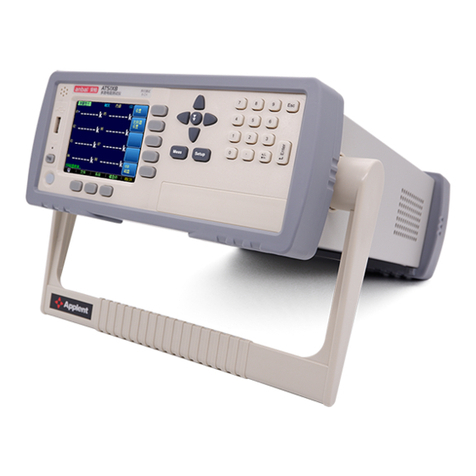
Applent Instruments
Applent Instruments AT5108 user guide
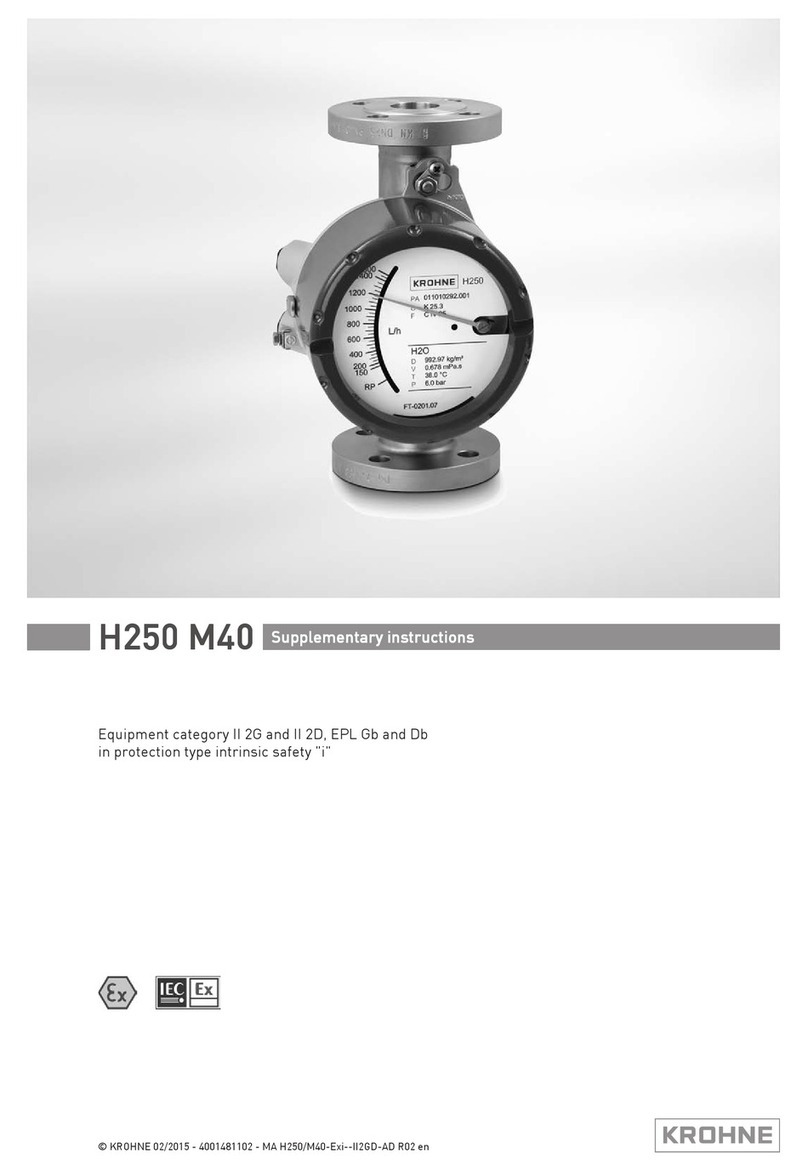
KROHNE
KROHNE H250 M40 Series Supplementary instructions

MED Associates
MED Associates ENV-421 user manual
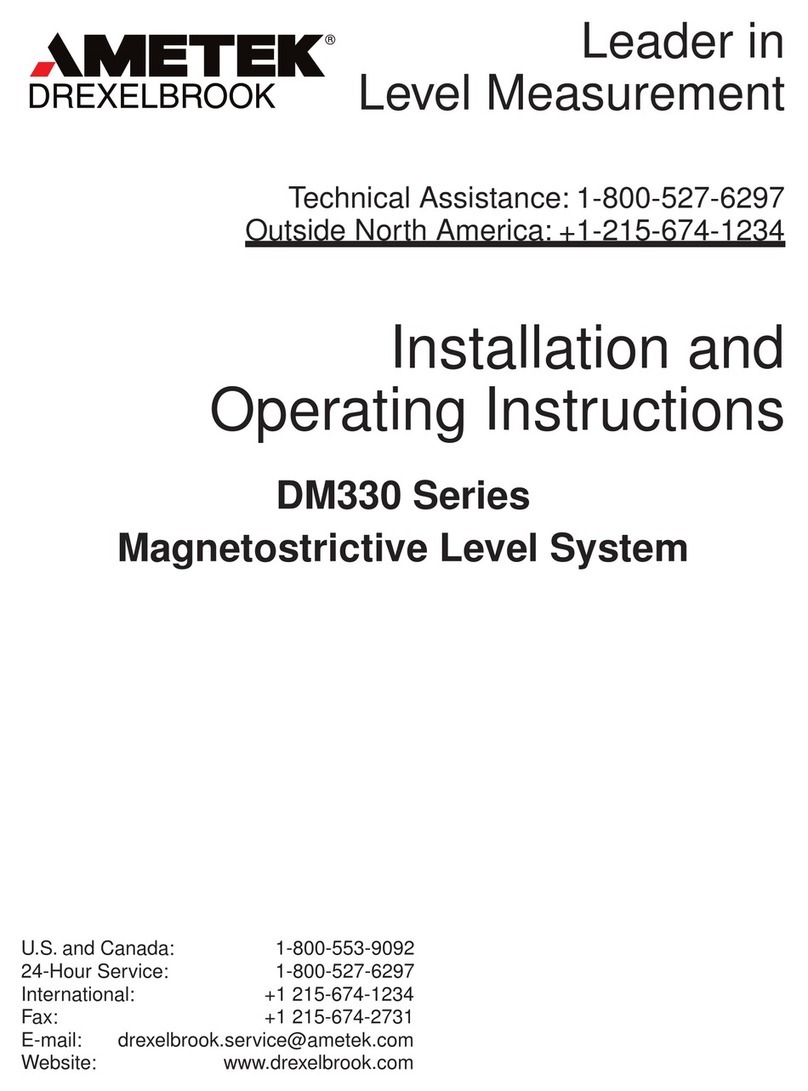
Ametek
Ametek DM330 Series Installation and operating instructions

Precision Digital Corporation
Precision Digital Corporation Vantageview PD6730 manual
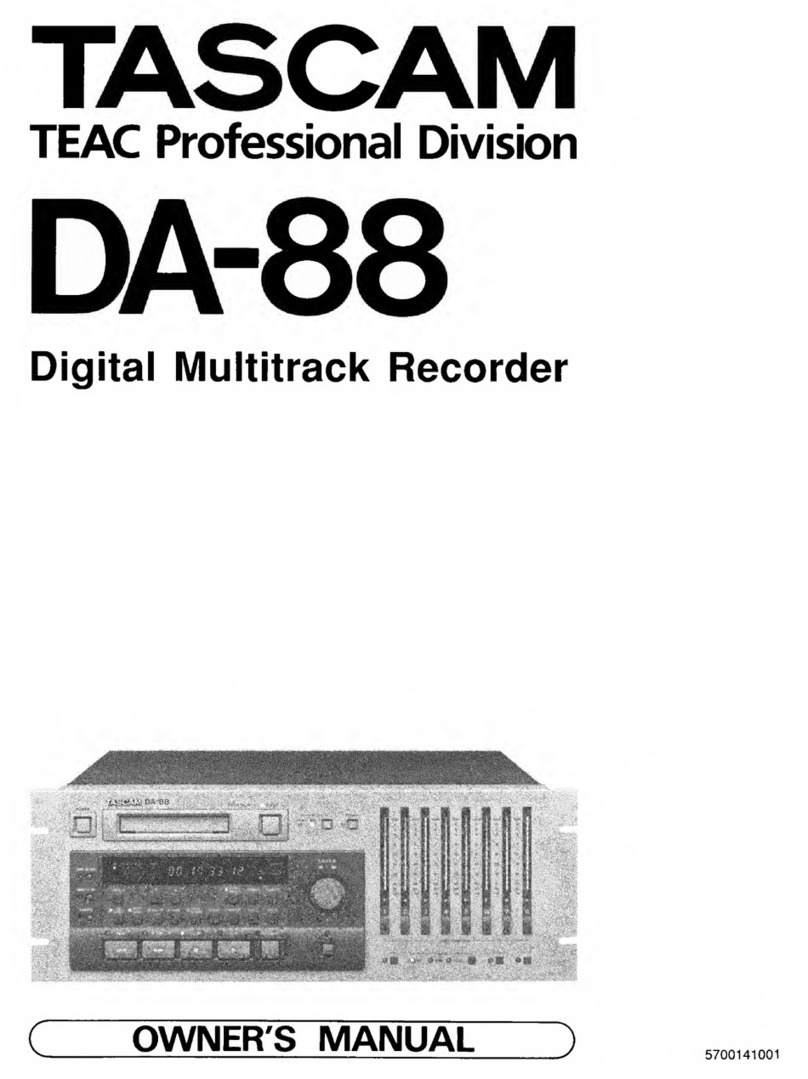
Tascam
Tascam DA-88 owner's manual

Chauvin Arnoux
Chauvin Arnoux BCP4 user manual
Bindicator
Bindicator SonoTracker Ultrasonic Liquid Level Installation & operation manual
Onicon
Onicon F-4400 user guide
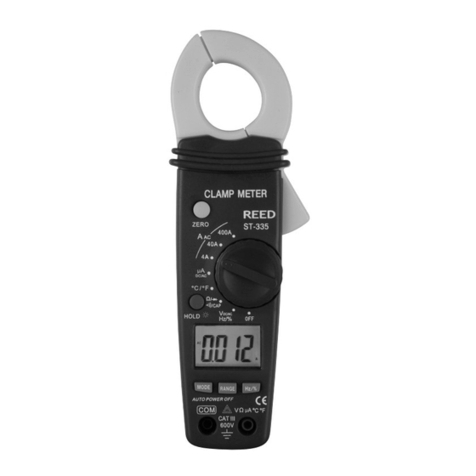
REED
REED ST-335 instruction manual
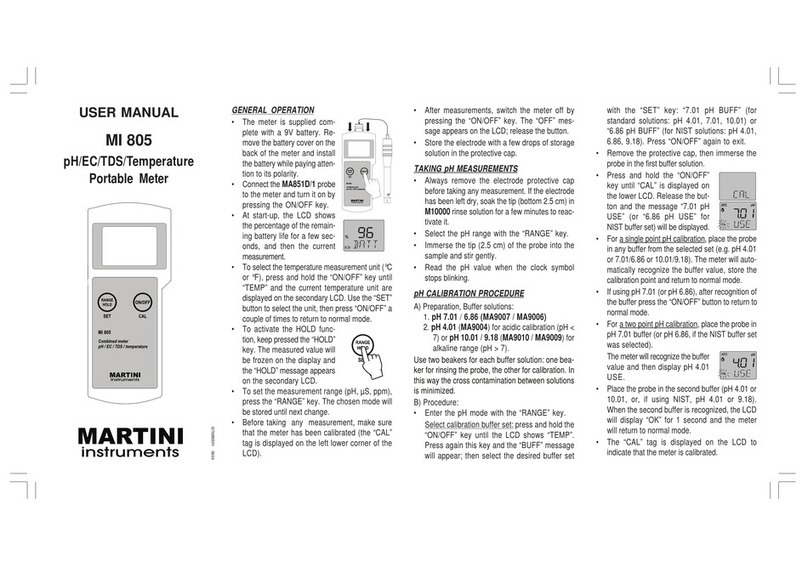
Martini Instruments
Martini Instruments MI 805 user manual
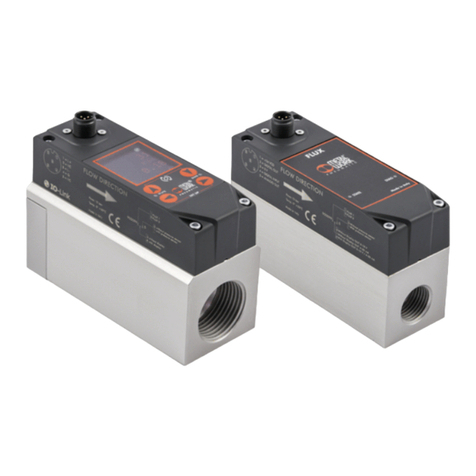
Metal Work Pneumatic
Metal Work Pneumatic FLUX Series user manual
